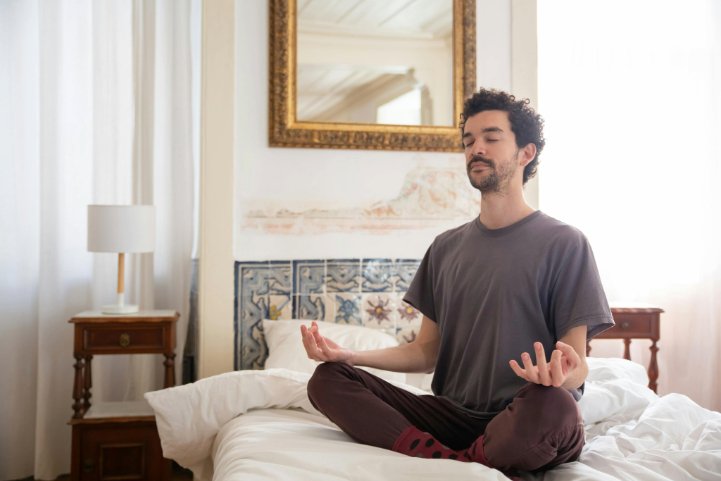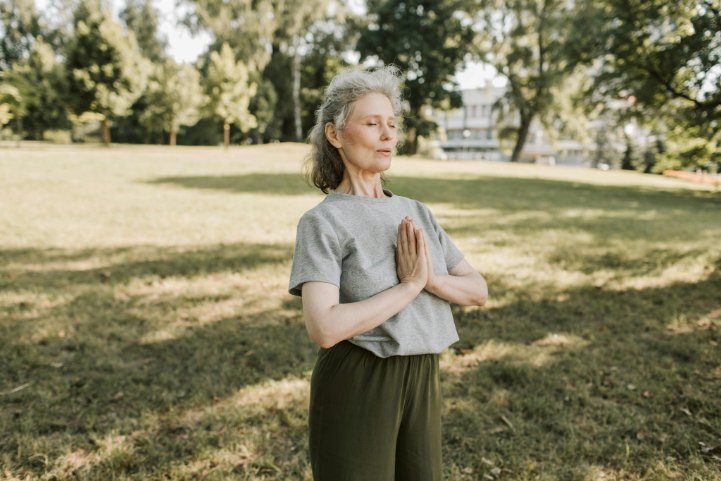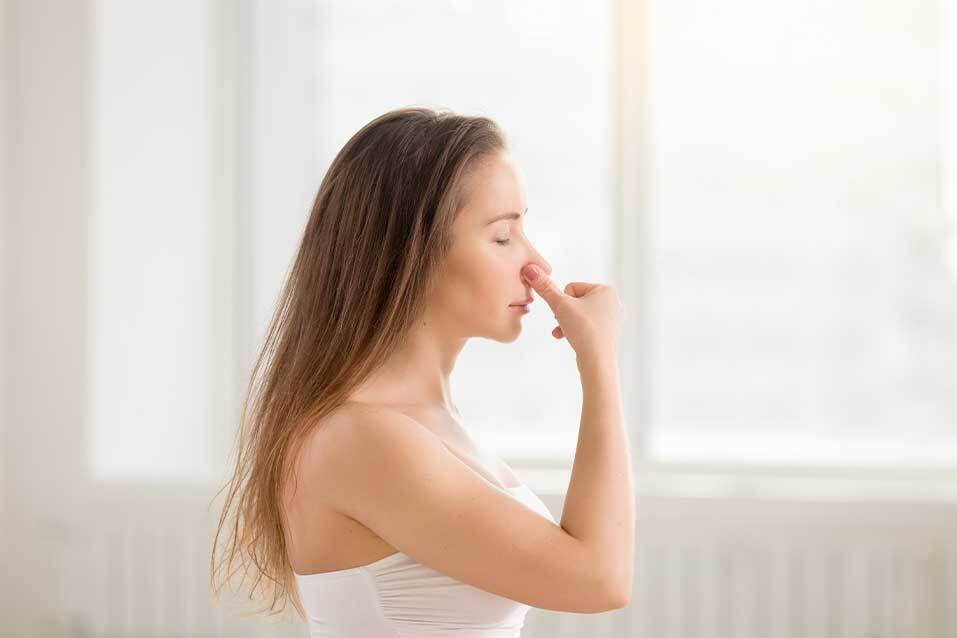
Breathing Exercises
Learn the 4-7-8 breathing technique to reduce stress and promote relaxation. Discover how this simple practice can enhance your well-being. Read more!
Your brain uses 20% of all your oxygen intake. This surprising fact explains how significant proper breathing is to maintaining mental clarity and emotional balance.
Our breathing becomes shallow and rapid during stressful or anxious moments. The solution to calming our minds might be as simple as changing how we breathe. The 4-7-8 breathing technique has proven to be the quickest way to achieve instant calm. This technique works on a physiological level by regulating our heart rate. Each inhale increases our heartbeat while each exhale naturally slows it down.
Scientific evidence supports this approach. Dr. Emma Seppälä’s research shows deep breathing works better than other anxiety treatments. These breathing techniques have also demonstrated remarkable results in reducing nightmares and flashbacks among war veterans with post-traumatic stress disorder.
We will help you become skilled at the 4-7-8 breathing method step by step. You will learn why it works so effectively and discover ways to incorporate it into your daily routine for lasting benefits. Let’s take a deep breath and start a journey toward instant calm.

Breathing does more than keep you alive – it’s your direct connection to controlling your nervous system. Your breathing patterns shape your brain’s behavior and influence your emotional state, memory, and attention.
Two main branches of the autonomic nervous system control your involuntary bodily functions. Your sympathetic branch kicks in with “fight-or-flight” responses during stress. The parasympathetic branch takes care of “rest-and-digest” functions. Your vagus nerve responds to slow, deep breaths and activates your parasympathetic nervous system to help you relax.
These physical changes create noticeable effects in your body:
Your breathing and emotions have a two-way relationship. The way you feel changes how you breathe, and your breathing pattern can substantially change how you feel.
Research shows that your pupils get bigger, reaction speed increases, and fear response increases with each breath in. The opposite happens when you breathe out. This explains why controlling your breath—especially longer exhales—helps reduce anxiety quickly.
Your brain and body’s state changes through specific breathing patterns. Breathing slowly with longer exhales tells your brain’s higher structures to create a sense of calm.
Your body shows stress through shallow, upper chest breathing. This creates a tough cycle – stress leads to shallow breathing, which creates more stress.
Shallow breaths mean your body doesn’t get enough oxygen and throws off your carbon dioxide balance. Your brain sees this as danger and triggers more fight-or-flight responses. On top of that, it stops your diaphragm from working correctly, which you need to activate your body’s natural relaxation response.
The 4-7-8 breathing technique breaks this cycle. It uses longer exhales to wake up your parasympathetic nervous system and bring back your body’s natural balance.

The 4-7-8 breathing technique is a simple but powerful breathing pattern that helps people relax and reduce stress. This method stands out from basic breathing exercises because it follows a specific timing that creates fundamental changes in your body.
The 4-7-8 breathing method follows a specific cycle. You breathe in quietly through your nose for 4 seconds, hold your breath for 7 seconds, and breathe out completely through your mouth for 8 seconds. This creates a deep, rhythmic pattern that helps control your autonomic nervous system. Your tongue’s tip should rest against the ridge of tissue behind your upper front teeth during the exercise. The exhale should create a whooshing sound through slightly pursed lips.
Dr. Andrew Weil, a Harvard-trained physician and founder of the Arizona Center for Integrative Medicine, made this breathing exercise popular. He introduced it to the public as a natural way to manage stress and anxiety in May 2015. The technique’s roots go back thousands of years—it comes from pranayama, an ancient yogic practice of breath control. These breathing techniques have been used in India for centuries to boost mental, physical, and spiritual wellbeing.
Dr. Weil suggests practicing this technique at least twice each day. Beginners should:
This breathing method works best during stressful moments or when sleep feels impossible. Regular practice makes it more effective—unlike anxiety medications that often become less powerful over time. People who practice regularly can lower their stress response and get long-term benefits.

The thing I love about the 4-7-8 breathing technique is how it combines simplicity with effectiveness. Let me show you the quickest way to master this method and get the most benefit from it.
You’ll need a comfortable spot where you won’t be interrupted. Your back should be straight if you’re sitting, but lying down works too if you plan to use this technique for sleep. The right posture is crucial when you first learn this method. A comfortable position on your back with arms and legs stretched out in a peaceful room works best if you choose to lie down.
Before you start, put the tip of your tongue against the roof of your mouth, just behind your upper front teeth. Your tongue should stay there throughout the exercise. Take a silent breath through your nose while counting to four in your head. Your lungs should fill completely until your stomach expands like a balloon.
Now comes the seven-second hold. Keep it gentle without forcing anything – just a relaxed hold while you count silently. Picture vibrant health and energy flowing through your body’s cells during this phase.
Let all the air out through your mouth for eight seconds with a “whoosh” sound. Your slightly pursed lips help create this effect. This long exhale enables you to relax – each breath out naturally lowers your heart rate and blood pressure.
Start with just four cycles in a row. You can build up to eight cycles as you get more comfortable. The seven-second hold might feel tough at first, so feel free to adjust the timing while keeping the same proportions (try 2-3.5-4 instead). Two practice sessions each day will give you the best results.
The biggest problem comes from inconsistent practice. On top of that, many new practitioners let their tongue slip from its position while breathing out. A bit of lightheadedness might happen at first – don’t worry, this feeling goes away with practice. Take your time with each count and find a rhythm that works for you while keeping the proper proportions.

Regular practice can turn the 4-7-8 breathing technique from a simple exercise into a powerful daily tool. You’ll need to make it part of your routine to get the full benefits.
The quickest way to see results is to practice the 4-7-8 breathing method twice daily. Expert practitioners suggest picking specific times in your day:
New practitioners should start with four breath cycles per session. You can slowly work up to eight cycles over a month. A complete session takes just 90 seconds, so it fits into even the busiest schedules.
The 4-7-8 breathing technique really shows its value at times of stress and anxiety. Try this breathing exercise before reacting to stressful situations. Your body will start to make it part of your natural stress response.
This technique helps with sleep problems by triggering your body’s relaxation response. It puts your body and mind in a sleep-ready state. More importantly, it enables you to focus on the present moment instead of worrying about past or future events.
You can boost your results by adding these complementary practices:
As you start this experience with the 4-7-8 breathing method, pay attention to your physical sensations and emotions before, during, and after the exercise. Tracking these changes builds your mind/body awareness and keeps you focused on the present moment.
Note that the benefits grow stronger with consistent practice. You might see quick results, but the technique becomes more powerful over time as your body adapts to it.

Master this scientifically-backed yet straightforward breathing technique to instantly activate your body’s natural relaxation response and reduce stress in just 90 seconds.
The 4-7-8 breathing technique works by interrupting the stress-shallow breathing cycle and directly stimulating the vagus nerve. This ancient pranayama practice, popularized by Dr. Andrew Weil, offers a free, accessible tool that transforms your stress response from the inside out.

The 4-7-8 breathing technique provides a simple yet powerful tool to manage stress and anxiety. This ancient practice affects your nervous system and creates measurable changes in your body, including lower blood pressure and reduced stress hormones.
You can practice this accessible 4-7-8 breathing method anywhere, anytime – during stressful work situations or when sleep feels elusive at night. Unlike medications that might lose their effect over time, this technique becomes more potent as you practice it consistently.
Note that becoming skilled at this method takes time. Your journey should begin with four cycles twice daily, and you can build up to eight as your comfort grows. Your body will naturally adopt this pattern during stressful moments, which creates an automatic calming response.
Breathing patterns shape our mental state significantly. The 4-7-8 technique’s extended exhale activates your parasympathetic nervous system, which signals your body that everything is fine, even in challenging situations.
Simple solutions often work best. We search for complex answers to anxiety and stress, but the key to instant calm lies in our breath. A month-long trial of this technique will help you find why many people call it a life-changing practice that brings inner peace.

The 4-7-8 method is a great way to relax—but it’s just the beginning. In the Art of Living Part 1 Course, you’ll learn SKY Breath Meditation, a complete, science-backed breathing practice that not only calms your mind but also boosts energy, improves sleep, and helps you handle stress with ease.
It’s more than a quick fix—it’s a life skill you can use anytime, anywhere.
🌬️ If one breathing pattern can help you, imagine what a complete breathing program can do.
👉 Join the course and explore how your breath can transform every part of your life.












